|
[1][2][3][4][5][6][7][8][9][10][11][12][13][14][15][16][17][18][19][20]
[21][22][23][24][25][26][27][28][29][30][31][32][33][34]
Page 16
1980's


The Last
County Brush Breaker
West Barnstable got this brush breaker in 1982 to replace its
1958 County Breaker.
It has a 1967 International military chassis and bar work by Ted
Young.
This breaker with its 1000 gallon tank was the last of the County
breakers.
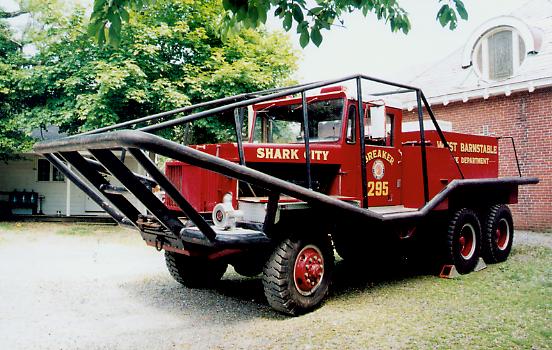
West Barnstable Breaker 295 in June 2002.
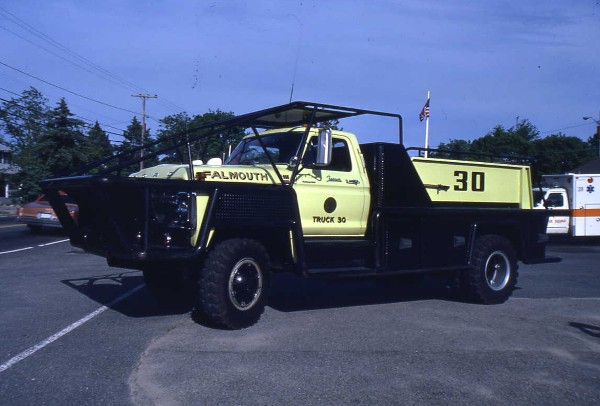
Falmouth Breaker 30 - 1982 Ford Farrar brush breaker.
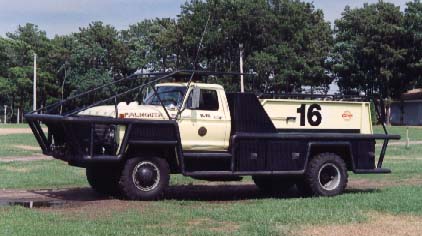
This 1982 Ford breaker is owned by Falmouth
Fire Department. B-16 was called Breaker 30
when delivered by Farrar with its 750 gallon tank.
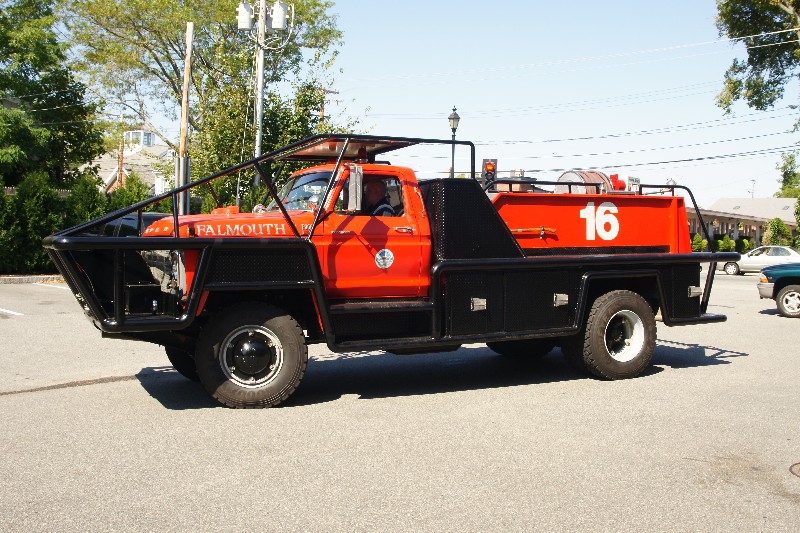
Falmouth Breaker 16
with new paint job in 2008
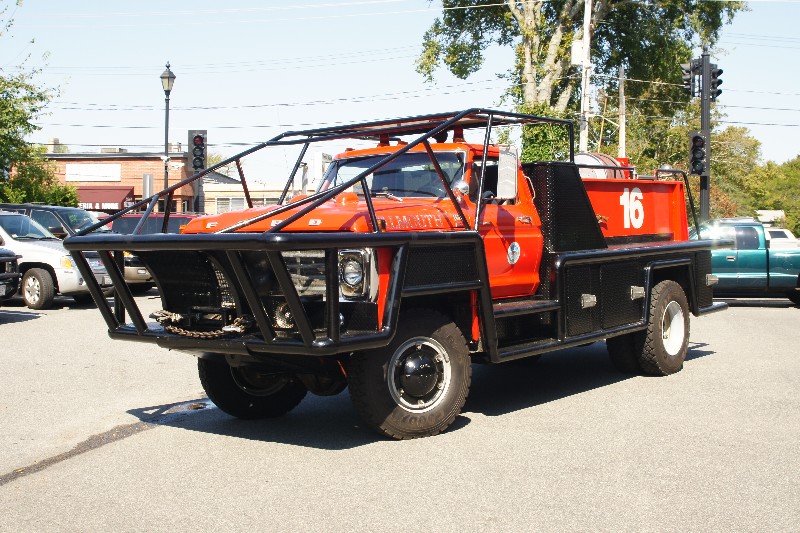

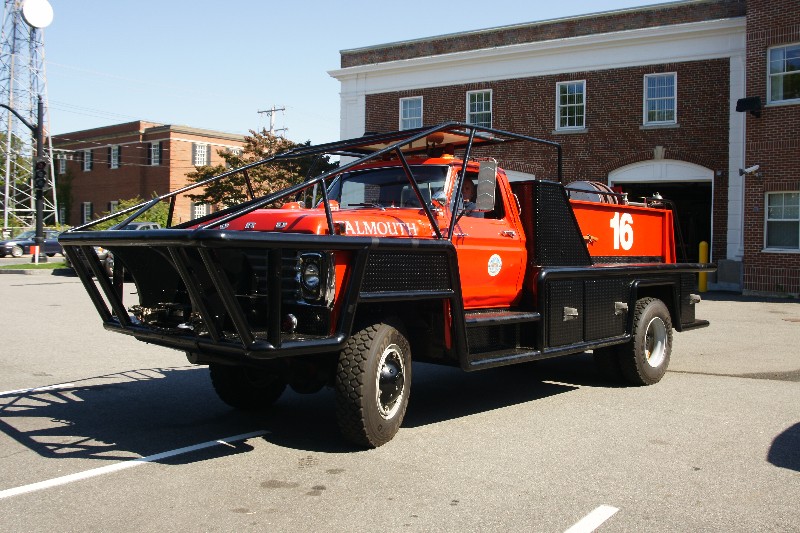
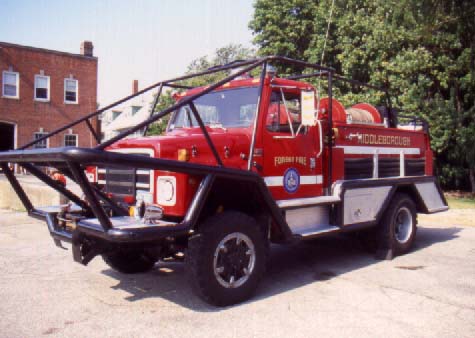
Middleborough's
1984 International / Maxim Brush Breaker.
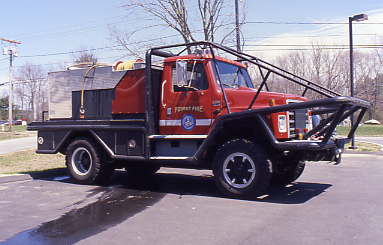
Middleborough Fire Department's Forest Fire 1 is a 1984
International /
Maxim brush breaker that was refurbished in 1997 by V-Tech.
It now has (2) 500 gpm pumps and carries 800 gallons.
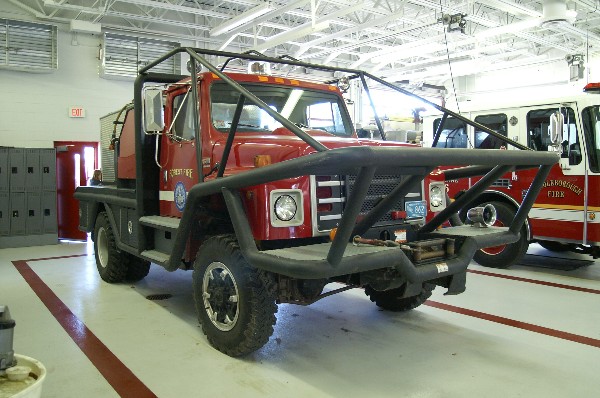
Middleborough Fire Department's Forest Fire 1 Nov 2005 photos
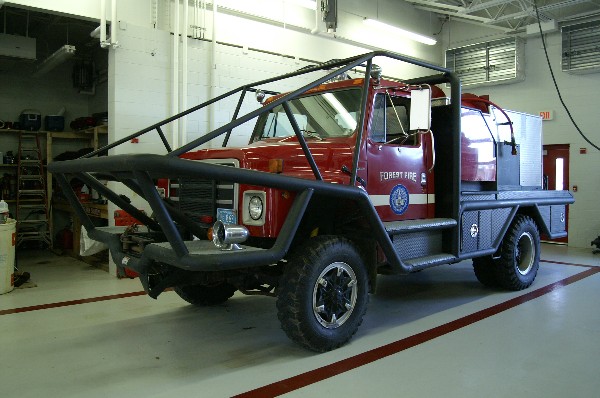
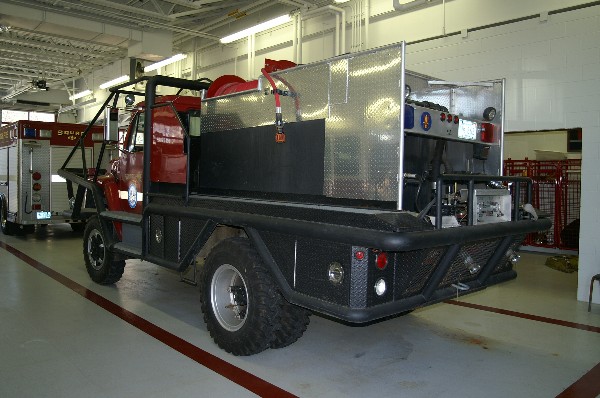
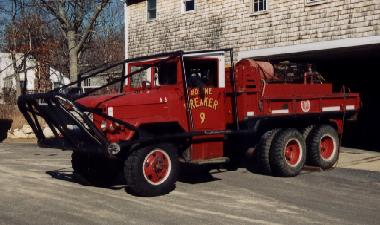
Bourne Fire Department Breaker 9 (129) was put in service
in 1986. It had a 1952 Reo chassis and was built locally.
It had a 600 gallon tank and was assigned to Monument Beach.
![]()
1980s FOREST FIRES

Command post and rehab area at Otis during 1986 fire.
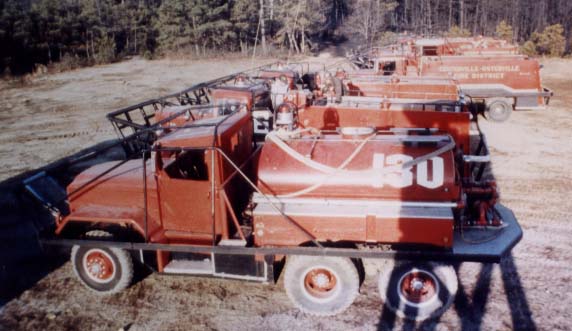
No fewer than seven breakers stage at sunrise
at this Massachusetts Military Reservation (Otis) the morning
after
a 2500 acres fire in anticipation of flare-ups. Breakers pictured
include: Bourne B130, State B6 and B5, Mashpee B354,
West Barnstable B295, COMM B316, and Sandwich B142.

The view from
behind the wheel of COMM FD's Breaker 316 following State Breaker
5 during wet down
of hot spots at Otis on April 1, 1986

The burned area from the 1986 fire.
The fire began in the impact area near the top and raced south
jumping several fire roads over the course of just a couple hours.
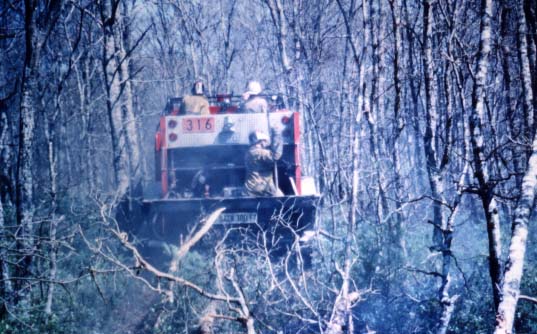
Brush Breakers
are designed to make their own path when necessary.
Smaller trees up to several inches in diameter are no match for
the large breakers.
Trees as large as a foot in diameter can be taken down if there
is no way around them.
Occasionally root balls can cause a breaker's wheels to lose
traction. Most breakers
are equipped with chain saws and powerful winches to free
themselves from being hung up.
The damage done to the woods by breakers is, in most cases, less
than that which a fire
will do if left to burn wild. The type of Terrain, rocks, rivers
and wetlands, fire fuel levels, and
other factors dictate appropriate use of this technique.
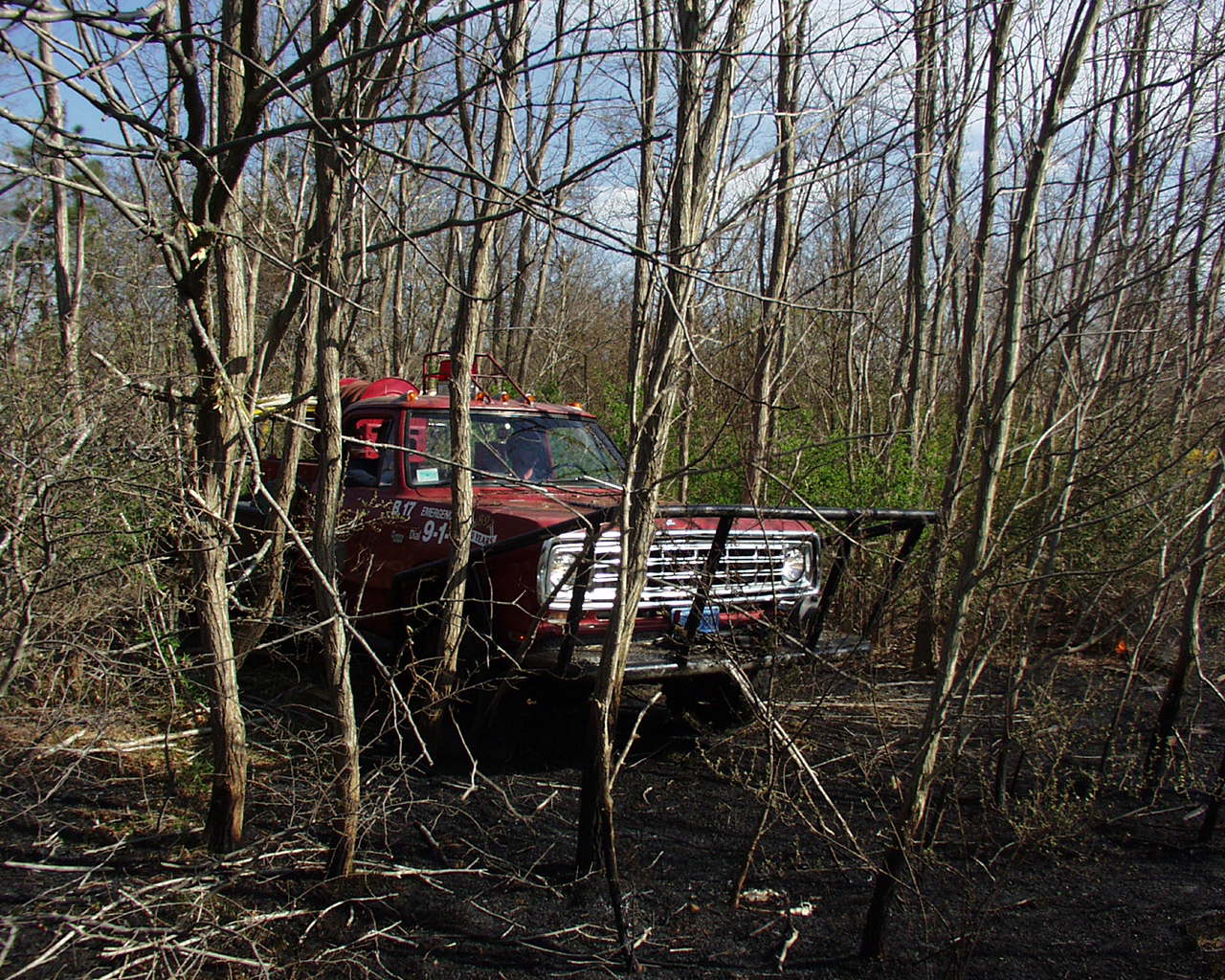
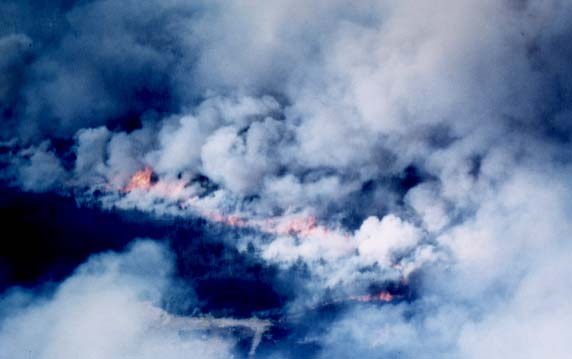
Large forest
fires can be very destructive and dangerous. This photo taken
from the Fire Patrol Plane
during the "Pave Paws Fire" of April 22, 1988 shows the
flames reaching 60'-100' in the air and
the thick smoke produced by the fire.

The "Pave
Paws" military radar site in the northern part of the
Massachusetts Military Reservation (Otis)
is seen at the right in this photo. This fire burned intensely
towards this vital military installation.
The clearing around the facility prevented any damage. The fire
however, continued to burn past the
facility consuming over 2000 acres within a couple hours.
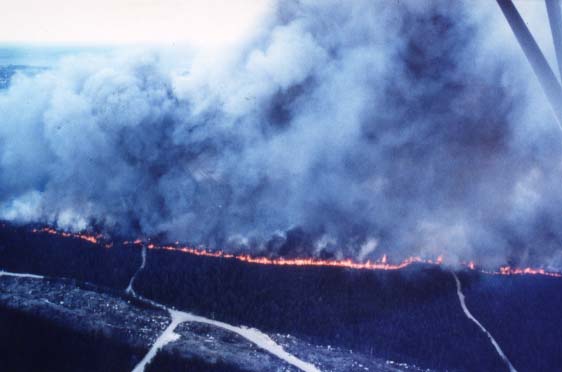
Side fire burns slowly towards the powerlines.
Should a wind shift occur, this flank would become the headfire
and
endanger anyone in front of it.
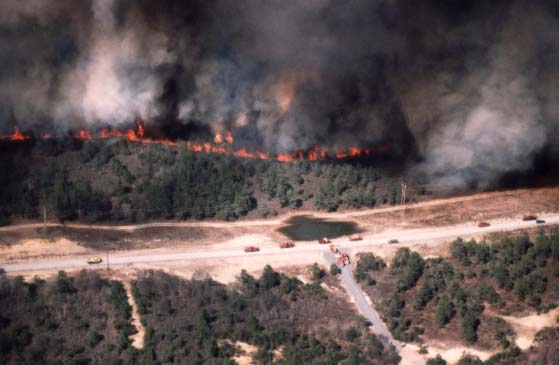
About a dozen fire apparatus, breakers and
tankers, are staged on the power lines to prevent the fire from
jumping this fire break.
If the fire direction and intensity were to change, , the fire
could easily jump the 100-150 foot wide fire break.
Fortunately, it did not.
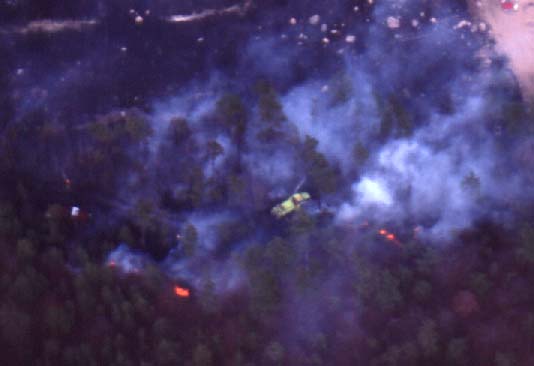
Bourne and Otis breakers extinguishing hot
spots in the burn.
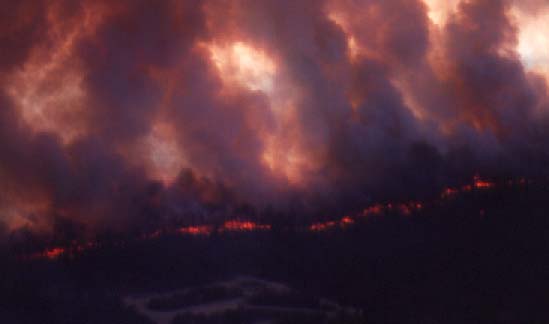
When side fire turns to head fire smoke darkens
and thickens.
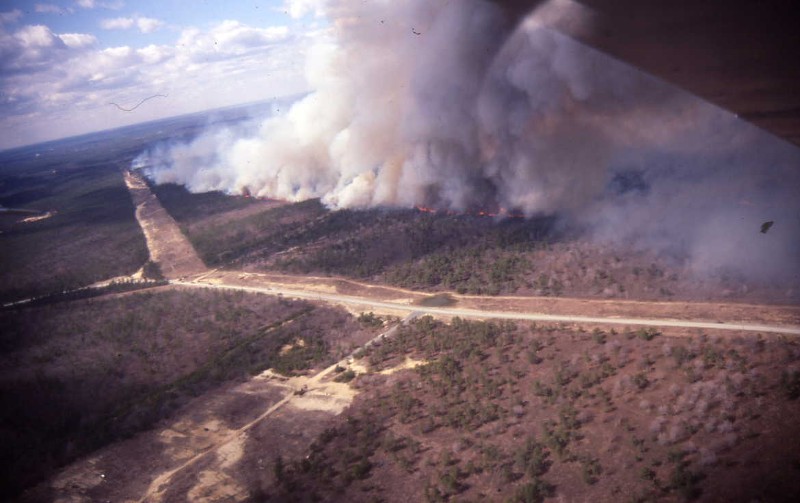
Pave Paws Fire April 22, 1988
Gibbs Road / Power Lines
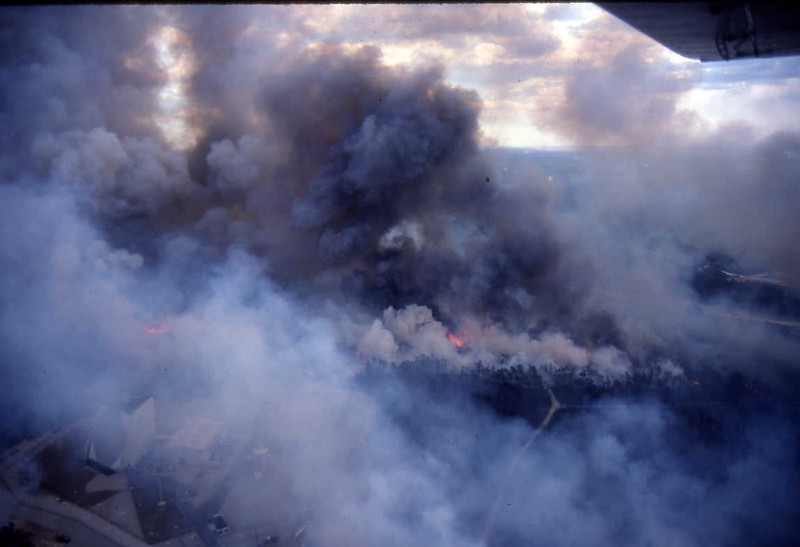
Pave Paws Fire April 22, 1988
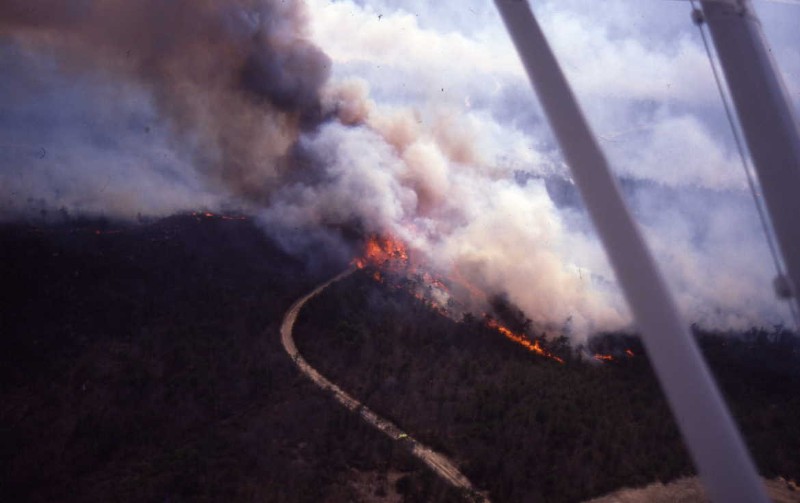
Pave Paws Fire April 22, 1988
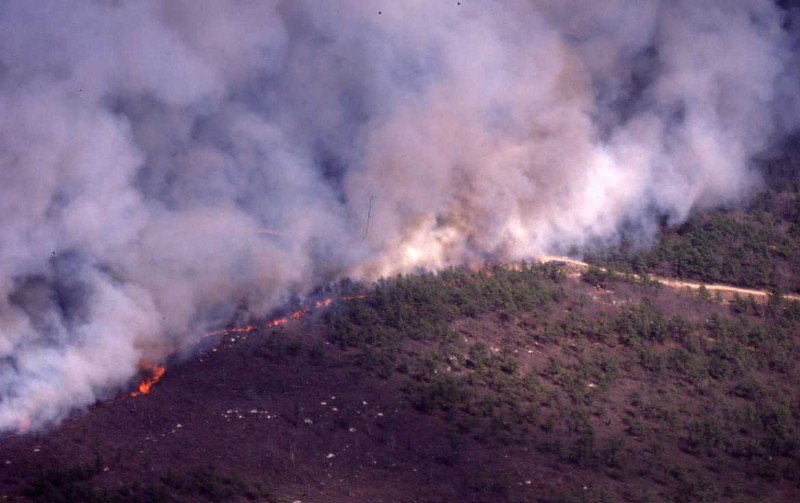
Pave Paws Fire April 22, 1988

Pave Paws Fire April 22, 1988
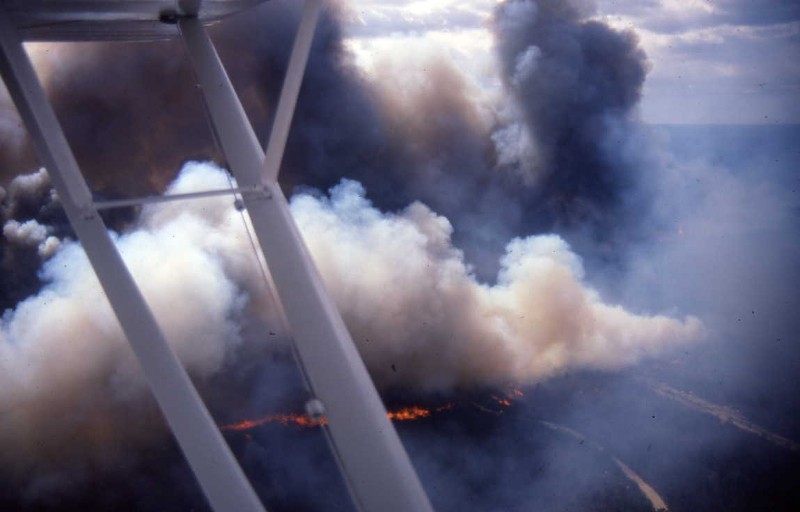
Pave Paws Fire April 22, 1988
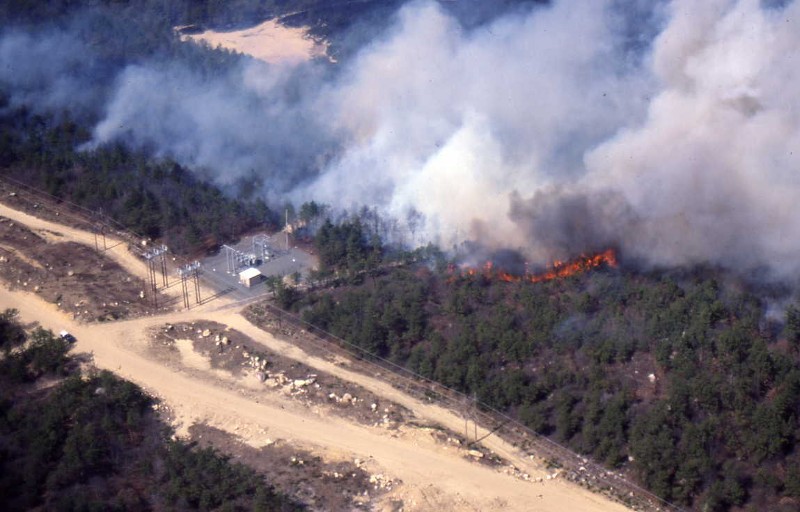
Pave Paws Fire April 22, 1988

Pave Paws Fire April 22, 1988
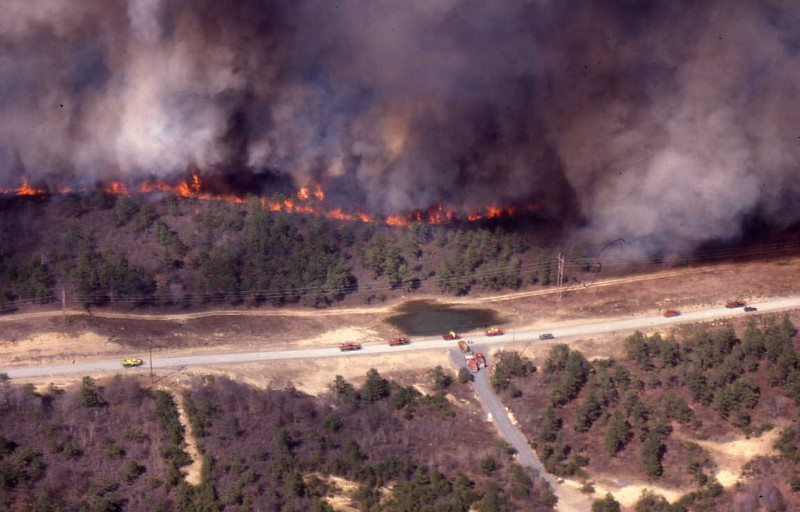
Pave Paws Fire April 22, 1988

Pave Paws Fire April 22, 1988

Pave Paws Fire April 22, 1988
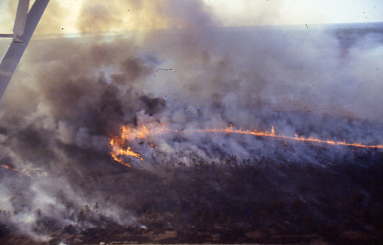
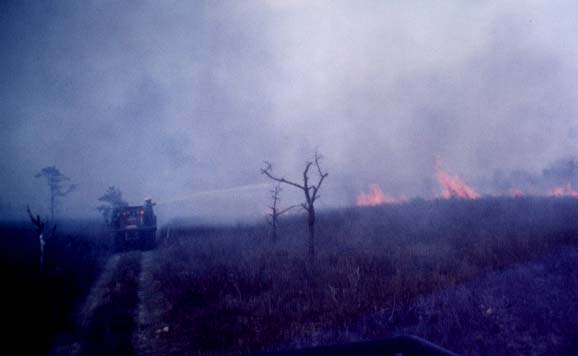
Sandwich Breaker 442 operates from the safety
of a service road within the impact area at Otis.
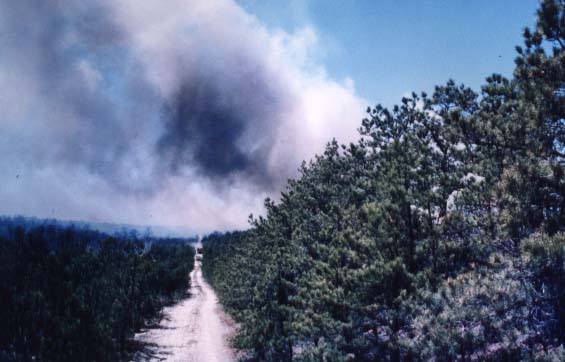
This fire in the Otis area easily jumped this
narrow fire road before being contained. Placing personnel and
apparatus in front of such a fire is dangerous. The safest attack
is to come in from behind the fire and
work on extinguishing side fire until the headfire can be reached
and knocked down. This takes a
coordinated effort and air communications make a big difference.
Wood Road fire April 19, 1986.
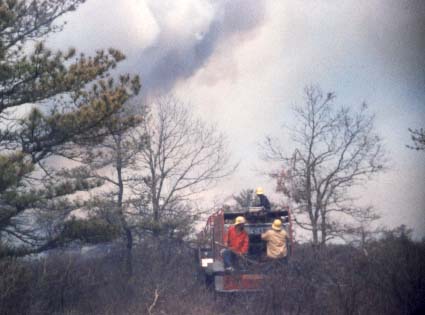
Conditions on the back of brush breakers during
firefighting can be pretty nasty.
Heat, smoke, dust, briars, fallen trees, and a host of other
hazards from the rough ride make
this a dangerous, yet memorable experience for firefighters.
![]()
1980S DUXBURY BREAKERS
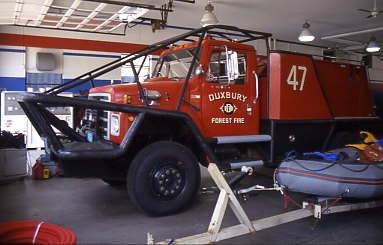
Duxbury Breaker 47 - 1988 International / Maxim
800 gpm / 765 gallon brush breaker.
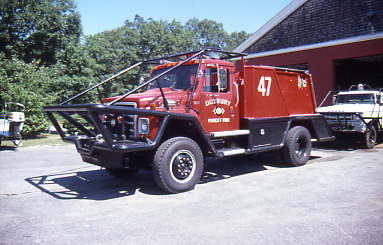
Duxbury breaker 47 - 1988 International / Maxim
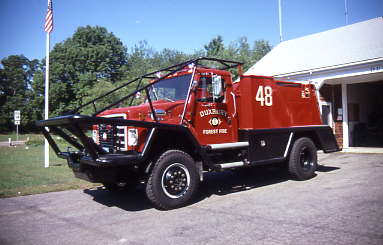
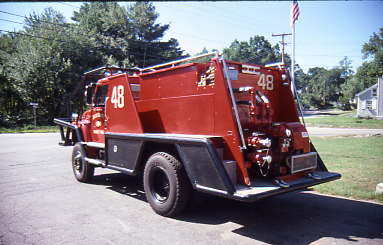
Duxbury Breaker 48 is a 1988 International 4900 / Maxim
800 gpm / 765 gallon brush breaker.

Duxbury Breaker 48
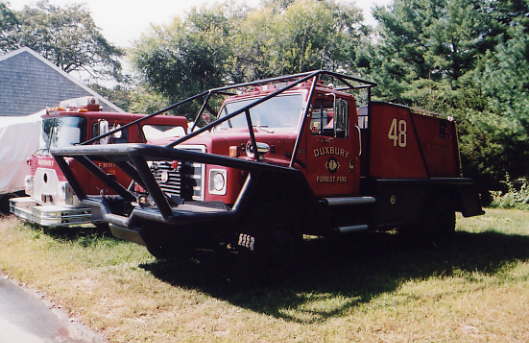
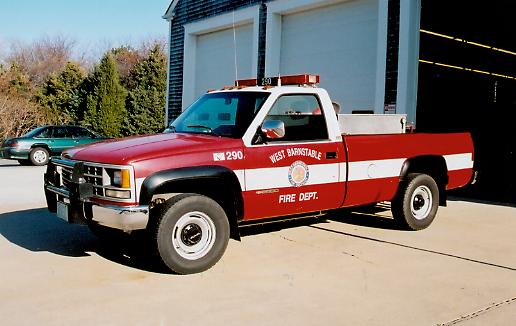
West
Barnstable's Patrol 290 is a 1989 Chevy 2500 Pickup Truck with a
170 gallon skid tank.
![]()
![]()
CAPE COD BRUSH BREAKERS
![]()
Related Links
Massachusetts DCR - Bureau of Forest
Fire Control
Forest Fire Lookout Association
History Early Fire Towers
Massachusetts Fire Tower Locations
CCFD.com - Plymouth Brush Breaker Drill April 2006
CCFD.com - Plymouth-Wareham Brush Fires May 2006
CCFD.com
- Sandwich Fire Tower 2006

NOTE
Photos in this series are from various sources
including fire department and personal collections.
(Top)